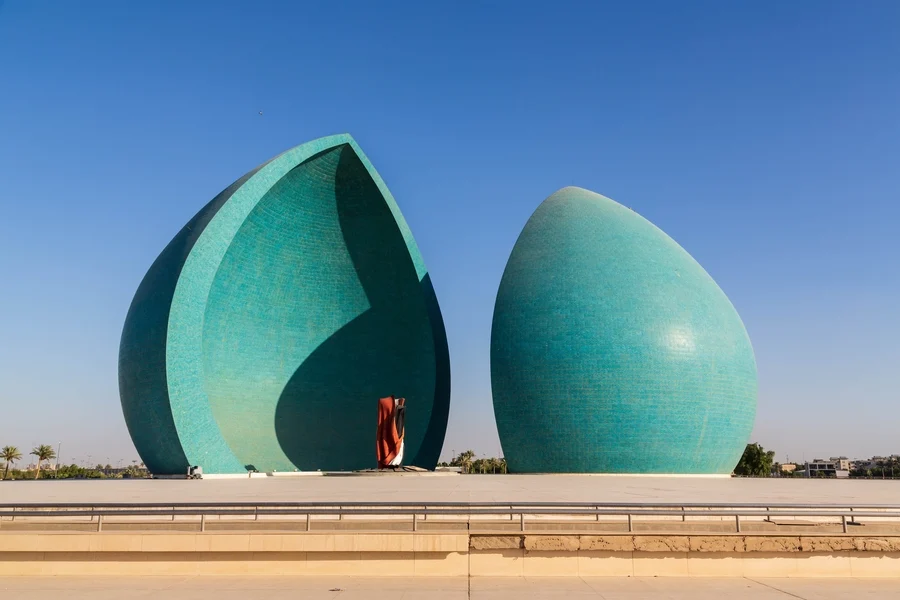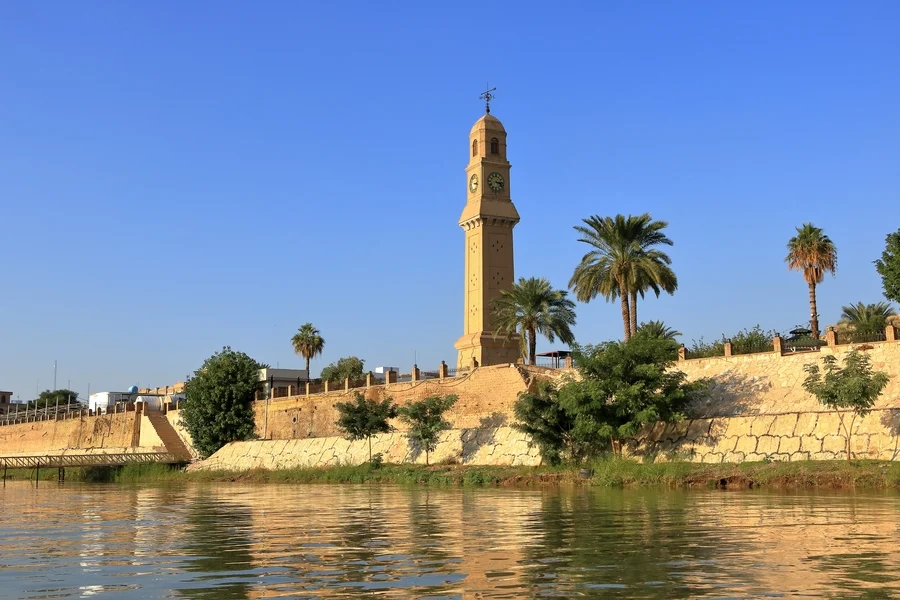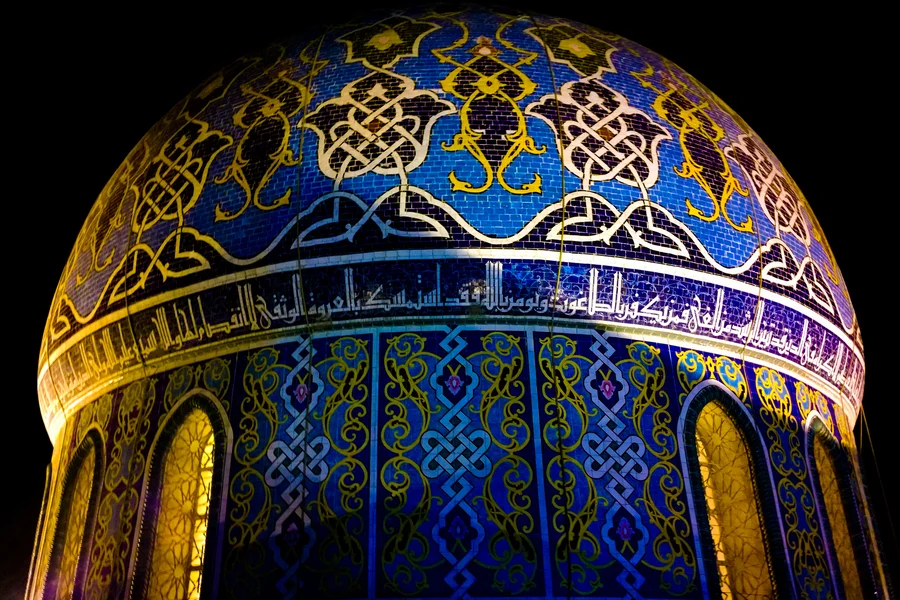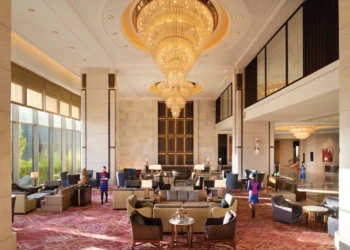One of the city’s most powerful symbols is Nasb al-Hurriyah, or the Freedom Monument. Standing prominently in Tahrir Square, this sculptural mural was designed in 1959 by renowned Iraqi artist Jawad Saleem and architect Rifat Chadirji. It depicts a narrative of struggle and liberation, beginning with scenes of oppression and culminating in victory and hope. Each bronze figure carved into the travertine facade represents the Iraqi people’s journey through monarchy, revolution, and independence. Beyond its artistic brilliance, the monument remains a gathering point for political expression and civic pride, an ever-relevant symbol in a city that continues to evolve.
Equally commanding is the Al-Shaheed Monument, or Martyr’s Monument, on the eastern bank of the Tigris River. Designed by sculptor Ismail Fatah al-Turk, the structure consists of a massive split turquoise dome, reminiscent of a traditional Islamic dome but rendered with a modernist abstraction. Erected in 1983, the monument honors the fallen Iraqi soldiers of the Iran-Iraq War, yet over time it has come to represent broader themes of sacrifice and national mourning. Its powerful visual language, with an eternal flame and underground museum, provides a space for remembrance amidst the city’s shifting narrative.
Baghdad’s architectural wealth includes Al- Mustansiriya School, a rare surviving treasure from the Abbasid era. Founded in 1227 under Caliph Al-Mustansir, the madrasa was one of the world’s earliest universities, offering education in medicine, mathematics, literature, and theology. Nestled near the bustling Mutanabbi Street, the school’s courtyard and intricate brickwork transport visitors to a time when Baghdad was at the forefront of global knowledge. Its careful restoration and continued prominence underscore the city’s deep academic and cultural roots.
Just across the river lies another treasure of Islamic architecture: the Al-Kadhimiya Mosque, known for its majestic blue domes and golden minarets. The site is one of the most sacred for Shia Muslims, housing the tombs of the 7th and 9th Imams, Musa al-Kadhim and Muhammad al-Jawad. The dome, covered in shimmering blue tiles and adorned with Kufic calligraphy and arabesque motifs, stands as both a place of devotion and a work of living art. Whether viewed in daylight or illuminated at night, it speaks to centuries of spiritual and artistic expression in Iraq.
While Baghdad’s grand structures command attention, its soul resides equally in its markets and crafts. Souk al-Safafeer, the Coppersmiths’ Market, is a sensory experience of sight, sound, and history. Rows of brass and copper trays, intricately hand- hammered with images of Mesopotamian ziggurats, ancient deities, and scenes from Iraq’s rich past, line the narrow pathways. This traditional market, dating back to the Abbasid period, continues to celebrate Baghdad’s artisanal heritage. Though the number of craftsmen has dwindled in recent decades, those who remain are guardians of a vanishing but vital aspect of the city’s identity.
That identity is deeply rooted in antiquity. Iraq, known as Mesopotamia, is the birthplace of writing and reminders of this ancient legacy are preserved in museums and ruins throughout Baghdad. Cuneiform inscriptions, like the ones seen etched into clay tablets and stone slabs, are a direct connection to Sumerian and Akkadian civilizations that flourished thousands of years ago. These characters, among the first forms of written language, reflect an enduring human need to record, communicate, and remember. Baghdad, though founded in the 8th century, carries the weight of this far older heritage with pride.
The Baghdad Clock Tower, located in the historic Qishla complex, was built during the Ottoman era in the 19th century. The tower rises above the banks of the Tigris as a quiet sentinel to the past. Surrounded by palm trees and the remnants of old governmental buildings, it offers a glimpse into the city’s colonial and administrative past. Today, the tower and its surrounding gardens serve as a public space, blending leisure with legacy.
In every dome, tower, monument, and market, Baghdad calls us to look deeper into its history, its culture, and its spirit. For those who walk its streets and listen to its stories, the city offers something rare: not only a glimpse into the past, but a reminder that history lives on, shaped daily by the people who call this city home.



































